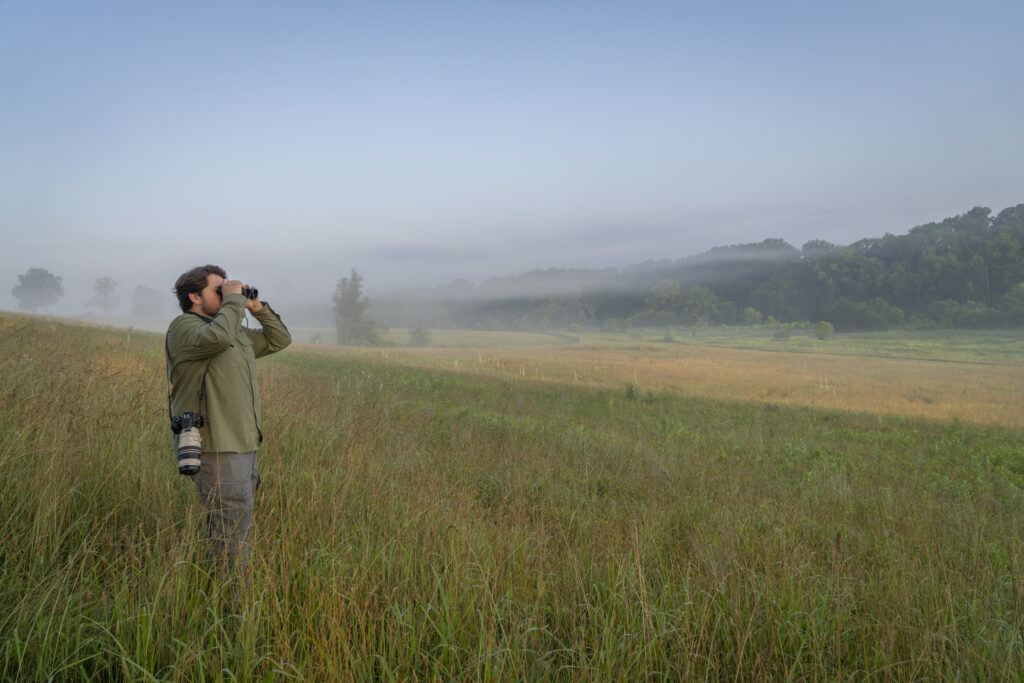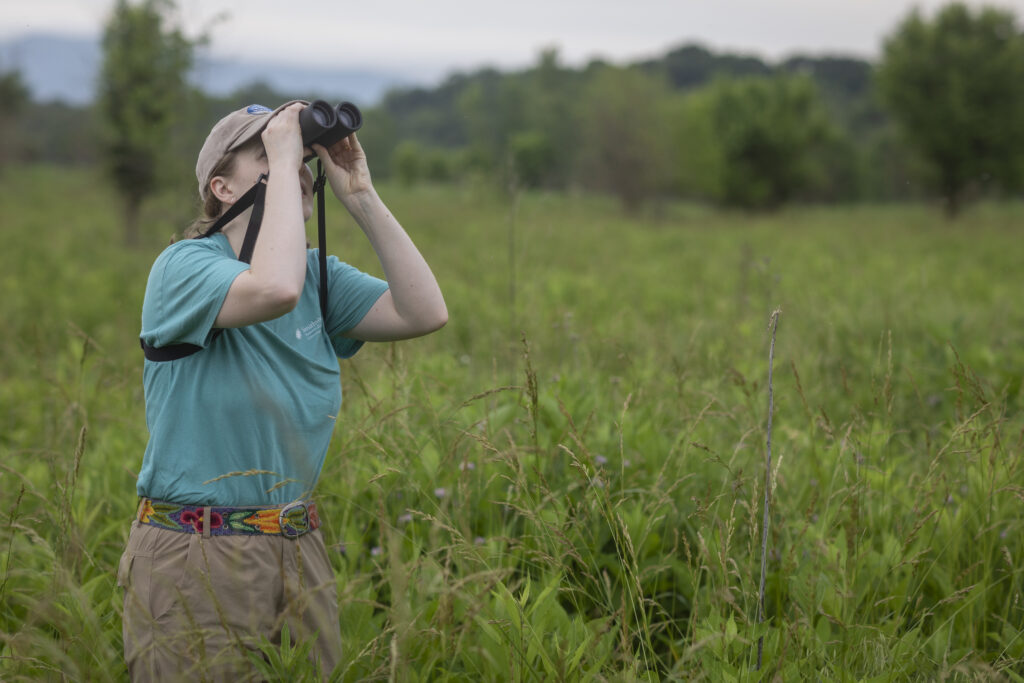Grassland Biodiversity Surveys

Project Objective:
VWL staff and teams of community scientists conduct annual grassland biodiversity surveys to better understand the factors that impact grassland species and to help guide best land management practices to support both landowners and native biodiversity. Ecological data collected from these surveys are being used to explore the complex relationships between land management activities and grassland biodiversity and to help predict the future of our region’s landscapes.
Description:
Every year, VWL staff and teams of community scientists, SCBI scientists, graduate students, and interns conduct biodiversity surveys on properties throughout our 16-county study region (see: Where We Work). These annual surveys include avian point counts, grassland vegetation surveys, pollinator inventories, and soil sampling. To date, we’ve surveyed more than 200 properties covering over 82,000 acres of private land and 97,000 acres in total. These surveys help us better understand the factors that affect the region’s biodiversity and help inform best land management practices for people and wildlife.

Grasslands were selected as the initial focus because they were the least well-known among the working landscape types (e.g. forests, wetlands, streams, and riparian zones) and had a known suite of declining species in need of further research. Moreover, although Virginia was mostly forested in precolonial times, it also included grasslands established and maintained by disturbance (i.e. storms, fires, and disease) and grazing. These grasslands were home to a suite of native plants, including warm season grasses, and the pollinators, birds, and other species that depended on them.
In the past 200 years, our agricultural tradition has changed the landscape from nearly continuous forest to a mosaic of forests, grasslands, pasture, and croplands. Although these practices likely benefited some grassland species by opening up the landscape, much of these native grasslands have since been lost through historic conversion to Eurasian cool season grasses, intensive land management, and more recently, invasion by non-native plant species. Accordingly, many of the native plants, pollinators, and birds that depend on native warm season grasses have declined over the last half century due to the loss of natural habitats.
Farmlands and associated grasslands in Virginia have been disappearing over the last 50 years—lost to forest succession and development. Today, about half of the Commonwealth is forested; about 30-40% is grassland, pasture, and croplands, with the remainder being exurban or urban development. As the quality and quantity of grasslands decline, much of the biodiversity that supports and regulates our agricultural economy is lost. Yet, this biological wealth and the benefits that come from it are essential for our individual and shared economic welfare. To that end, conservation biologists have become increasingly interested in sustaining biodiversity across a landscape that is composed of both public and private lands.

In Virginia, the overwhelming majority of working lands are held in private hands—more than 90% of Virginia is privately owned. Therefore, private landowners are both the keepers of their own economic well-being and the stewards of the natural resources of Virginia. In order for VWL to be successful we rely on community engagement with the landowners in the region. We recruit additional landowners each spring whose properties serve as new sites for our biodiversity surveys. At the end of each season, we provide landowners with a summary of species observed on their property. Taken together, data from each of these farms are being analyzed as part of a larger study on the relationship between land-management and native species biodiversity and long-term studies that will utilize these data to predict the future of our region’s landscapes.
Click here to read an interactive Story Map based on 5 years of VWL’s grassland bird surveys.
Are you a landowner interested in participating? Learn more here!
Project Contact:
Erin Shibley, VWL Survey Coordinator, ShibleyE@si.edu
SUPPORT VWL
VWL is supported 100% by grants and donations and our work is made possible by the generous contributions from our community.
The Smithsonian Institution is a 501(c)(3). All contributions are tax-deductible.
GET IN TOUCH
Virginia Working Landscapes
Smithsonian’s National Zoo and Conservation Biology Institute
1500 Remount Road, MRC 5537
Front Royal, Virginia 22630
SCBIVWL@si.edu
540-635-0035
